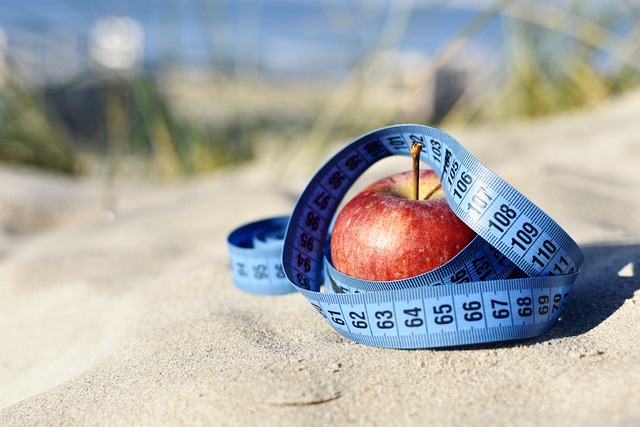Are you trying to shed some pounds but unsure of how many calories you should be consuming? Well, you’re not alone. Figuring out the right calorie intake for weight loss can be a bit confusing, but fear not, we’ve got you covered. In this article, we’ll delve into the topic and provide you with the information you need to reach your goal.
When it comes to losing weight, calorie intake is a crucial factor. To shed those unwanted pounds, you need to create a calorie deficit, which means consuming fewer calories than your body needs to maintain its current weight. But how do you determine the right calorie intake for weight loss? It depends on various factors such as your age, gender, activity level, and current weight.
In the next few paragraphs, we’ll explore these factors in more detail and provide you with a general guideline to help you calculate your ideal calorie intake for weight loss. So, if you’re eager to learn more about this topic and start your weight loss journey on the right track, keep reading!

Understanding the Basics of Weight Loss
What is weight loss?
Weight loss refers to the process of reducing body weight, often in the context of improving health or achieving a desired body shape or size. It involves shedding excess fat and, in some cases, muscle mass. Weight loss can be achieved through a combination of dietary changes, increased physical activity, and lifestyle modifications.
Why is calorie consumption important for weight loss?
Calorie consumption plays a crucial role in weight loss because it dictates the overall energy balance in the body. Calories are a measure of energy, and when you consume fewer calories than your body needs to maintain its current weight, it creates a calorie deficit. This deficit forces your body to tap into its fat stores for energy, leading to weight loss over time.
How do calories affect weight gain or loss?
Calories are the primary source of fuel for the body. When you consume more calories than your body needs, it stores the excess as fat, leading to weight gain. Conversely, when you consume fewer calories than your body needs, it is forced to burn stored fat for energy, resulting in weight loss.
Determining Your Personal Calorie Needs
Factors that influence calorie requirements
Several factors influence individual calorie requirements, including age, sex, weight, height, and activity level. Metabolism also plays a significant role. People with faster metabolisms tend to burn more calories at rest, while those with slower metabolisms burn fewer calories.
Calculating Basal Metabolic Rate (BMR)
Basal Metabolic Rate (BMR) is the number of calories your body needs to perform basic functions at rest, such as breathing and maintaining body temperature. It represents the minimum amount of energy required to sustain life. BMR can be estimated using various formulas that take into account your age, sex, weight, and height.
Accounting for physical activity level
In addition to BMR, you need to consider your physical activity level when determining your daily calorie needs for weight loss. The more active you are, the more calories you’ll burn, and the higher your calorie requirements will be. It’s essential to factor in both exercise and non-exercise physical activity when calculating your total daily energy expenditure (TDEE).

Setting a Safe and Realistic Weight Loss Goal
Importance of setting a realistic goal
Setting a realistic weight loss goal is crucial for long-term success. It helps you stay motivated, track your progress, and avoid disappointment. It’s important to remember that weight loss should be gradual and sustainable, as rapid weight loss can be detrimental to your health and lead to muscle loss rather than fat loss.
Understanding healthy weight loss rates
A safe and healthy weight loss rate is typically considered to be 1-2 pounds per week. This equates to a calorie deficit of about 500-1000 calories per day. By aiming for this moderate rate of weight loss, you can ensure that the majority of the weight you lose is fat and not muscle.
Considering individual factors
It’s important to consider individual factors when setting your weight loss goal. Factors such as current weight, body composition, overall health, and personal preferences play a role in determining what is a reasonable and achievable goal for you. Consulting with a healthcare professional or registered dietitian can help you set a personalized weight loss plan.
Calculating Calorie Deficit for Effective Weight Loss
What is a calorie deficit?
A calorie deficit occurs when you consume fewer calories than your body needs to maintain its current weight. It is the key to effective weight loss because it forces your body to use stored fat for energy. To create a calorie deficit, you can either reduce your calorie intake through diet or increase your calorie expenditure through exercise.
Calculating calorie deficit for weight loss
To calculate your calorie deficit, you need to determine your TDEE and subtract a certain number of calories from it. As mentioned earlier, a safe and realistic calorie deficit for weight loss is about 500-1000 calories per day, which should result in a loss of 1-2 pounds per week. However, it’s important not to exceed a deficit of 1000 calories per day, as this can be unhealthy and unsustainable.
Balancing calorie deficit with nutrient intake
While creating a calorie deficit is essential for weight loss, it’s equally important to ensure that you’re getting adequate nutrients from your diet. Restricting calories too much without considering nutrient quality can lead to nutrient deficiencies and negatively impact your overall health. Focus on consuming nutrient-dense foods that provide essential vitamins, minerals, and macronutrients while staying within your calorie range.

Choosing Nutritious Foods for Weight Loss
Importance of a balanced diet
A balanced diet is essential for overall health and weight loss. It should include a variety of nutrient-dense foods from all food groups, such as fruits, vegetables, whole grains, lean proteins, and healthy fats. A balanced diet provides the necessary nutrients for optimal bodily functions and helps maintain satiety, making it easier to stick to your calorie goals.
Selecting nutrient-dense foods
When aiming for weight loss, it’s important to prioritize nutrient-dense foods that provide the most nutritional bang for your calorie buck. Focus on whole, minimally processed foods that are rich in vitamins, minerals, fiber, and other beneficial compounds. Examples include fruits, vegetables, legumes, whole grains, lean proteins, and healthy fats like avocados and nuts.
Tips for meal planning and portion control
Meal planning and portion control can be effective strategies for weight loss. By planning your meals in advance and portioning them out, you have better control over your calorie intake. Consider using smaller plates and bowls to naturally reduce portion sizes. Including a variety of colors, flavors, and textures in your meals can also help make your meals more enjoyable and satisfying.
The Role of Macronutrients in Weight Loss
Understanding carbohydrates, proteins, and fats
Carbohydrates, proteins, and fats are the three primary macronutrients that make up the caloric content of foods. Carbohydrates provide energy, proteins are essential for tissue repair and maintenance, and fats play a role in hormone production and nutrient absorption. Each macronutrient has a different caloric value – 1 gram of carbohydrates or protein provides 4 calories, while 1 gram of fat provides 9 calories.
Optimal macronutrient distribution for weight loss
The optimal macronutrient distribution for weight loss is highly individual and may vary based on factors such as activity level and personal preferences. However, a general guideline is to consume a moderate amount of carbohydrates, adequate protein, and a modest amount of healthy fats. Complex carbohydrates, lean proteins, and unsaturated fats are typically recommended.
Impact of dietary fiber on weight management
Dietary fiber, a type of carbohydrate found in plants, plays a crucial role in weight management. It adds bulk to the diet, promoting feelings of fullness and reducing calorie intake. Fiber also slows down digestion and absorption of nutrients, preventing blood sugar spikes and promoting stable energy levels. Including high-fiber foods such as fruits, vegetables, whole grains, and legumes in your diet can aid in weight loss efforts.

Tracking Calorie Intake and Managing Portion Sizes
Tools for tracking calorie consumption
Tracking calorie consumption can be helpful for weight loss. There are various tools and apps available that can help you track your calorie intake, such as MyFitnessPal and Lose It!. These tools allow you to log your food and beverages, providing insights into your nutrient intake, portion sizes, and overall calorie balance.
Estimating portion sizes
Estimating portion sizes is crucial for maintaining a calorie deficit. While tracking calories can help you be more aware of your intake, it’s also important to develop an understanding of portion sizes. Familiarize yourself with visual cues and general portion guidelines for different types of foods. You can also use measuring cups, a food scale, or portion control plates to ensure your portion sizes align with your goals.
Tips for mindful eating
Practicing mindful eating can assist in weight loss efforts. This involves paying attention to your body’s hunger and fullness cues, eating slowly, and savoring each bite. Avoid distractions like screens or eating on-the-go, as this can lead to mindless overeating. Take the time to appreciate the flavors, textures, and smells of your food, which can enhance satisfaction and reduce the desire to overeat.
Adapting Calorie Consumption for Sustainable Weight Loss
Long-term lifestyle changes for weight maintenance
Sustainable weight loss requires long-term lifestyle changes rather than short-term diets. Focus on incorporating healthy habits into your daily routine, such as eating a balanced diet, engaging in regular physical activity, managing stress, and getting adequate sleep. Making these changes permanent can help you maintain your weight loss and improve overall health.
Gradually adjusting calorie intake
As you progress with your weight loss journey, it’s important to reassess your calorie intake periodically. As you lose weight, your calorie needs may decrease, so you may need to adjust your calorie intake to ensure you continue to create a calorie deficit. Gradually reducing your calorie intake can help prevent metabolic adaptation and make long-term weight maintenance more achievable.
Dealing with weight loss plateaus
Weight loss plateaus are common and can be frustrating. When your weight loss stalls despite your efforts, it’s important not to get discouraged. Consider implementing changes to your exercise routine or adjusting your calorie intake to reignite weight loss. Consulting with a healthcare professional or registered dietitian can provide additional guidance and support during this phase.

Considering the Role of Exercise in Weight Loss
Benefits of exercise for weight loss
Exercise plays a significant role in weight loss. It helps burn calories, increase metabolism, and improve overall fitness. Regular physical activity also has numerous health benefits, such as reducing the risk of chronic diseases, improving mood, and enhancing quality of life.
Balancing exercise with calorie consumption
When incorporating exercise into your weight loss plan, it’s important to find a balance between calorie consumption and expenditure. If you increase your physical activity, you may need to adjust your calorie intake to ensure you’re still creating a calorie deficit. It’s also essential to fuel your body properly before and after exercise to support performance and recovery.
Types of exercises for optimal calorie burn
Different types of exercises can contribute to calorie burn and weight loss. Cardiovascular exercises, such as running, cycling, or swimming, are known for burning a significant number of calories. Strength training exercises, on the other hand, help build lean muscle mass, which increases your metabolism and calorie expenditure even at rest. Combining both cardio and strength training can maximize calorie burn and overall fitness.
Conclusion
In conclusion, determining how many calories you should consume for weight loss requires understanding your personal calorie needs, setting safe and realistic goals, and creating a calorie deficit through proper nutrition and exercise. It’s crucial to focus on a balanced diet, tracking calorie intake, and making sustainable lifestyle changes. Remember to consult with a healthcare professional or registered dietitian to ensure a personalized approach to calorie consumption and weight loss. By taking a personalized and mindful approach to your calorie intake, you can achieve your weight loss goals and improve your overall health.



